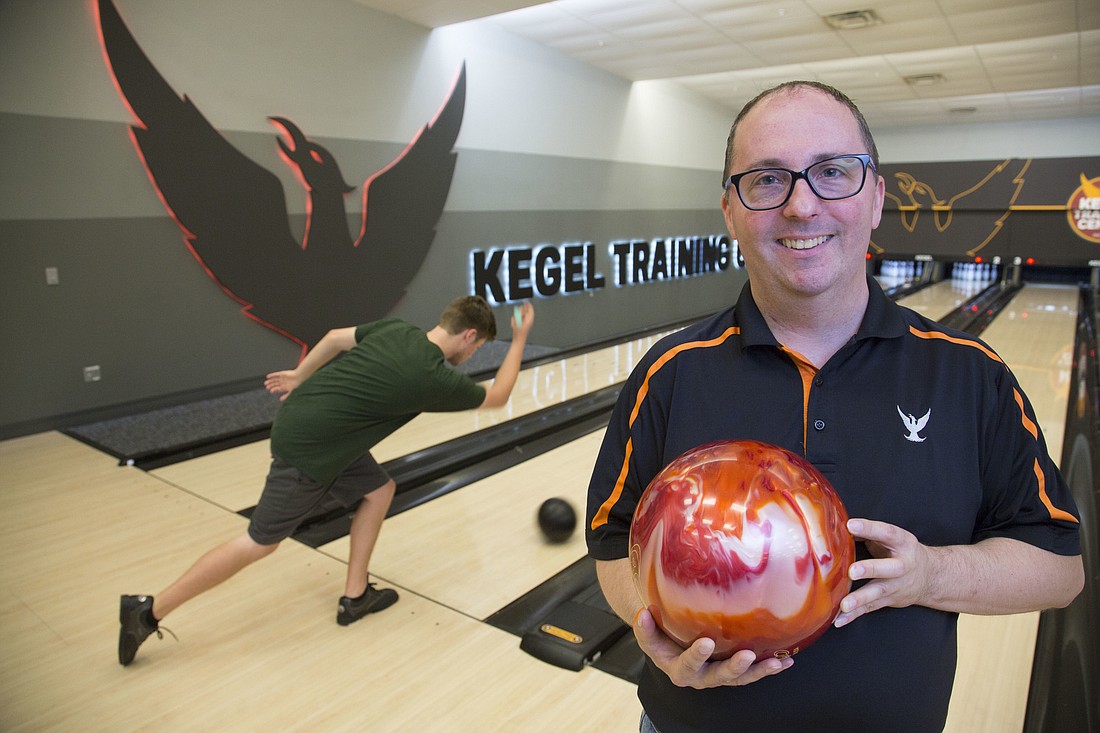- January 2, 2025
-
-
Loading

Loading

A niche manufacturer who crafts machines and products for an evolving consumer base — one that doesn’t appreciate the way past patrons did things — is in an existential quandary.
Generalize for casual customers, the newcomers? Or double-down in specialization to serve an elite clientele, the loyalists?
The answer, at least at Kegel Training Center in Lake Wales, Polk County, is a bit of both. That’s been the model since the late John Davis founded the bowling supply and training business in his Sebring garage nearly four decades ago.
An adaptation of German for bowling, Kegel has evolved since 1981 into a leading manufacturer of lane-cleaning machines, conditioners and pinsetter parts for bowling alleys worldwide. The company’s 74,000-square-foot plant in Lake Wales employs more than 100 and annually sells $20 million in bowling lane maintenance machines, parts and chemicals, nearly half overseas. It has five divisions — manufacturing, technology, e-support maintenance, pinsetter parts, machine services — and its state-of-the-art Kegel Training Center is dedicated to training coaches and pro shop managers to promote competitive bowling.
“We don’t settle for ‘good enough.’ If it’s not great, it’s not good enough for our company.” Brent Sims, Kegel Training Center
But Kegel’s soul is its love of the game and in promoting bowling as a sport. Doing that, while capturing its growth as a recreational activity, is “the biggest challenge to our company,” Kegel Training Center Director Brent Sims says.
Founded a generation after bowling peaked as a sport in the U.S., Kegel’s timeline details introductions of new technologies on a near-yearly basis while stubbornly catering to the competitive bowler. To satisfy that customer base, the company, since 1998, has operated a training center dedicated to what officials say is learning “as much as possible about the ever-changing bowling environment.”
The original Kegel Training Center was retrofitted into Sebring’s Ridge Lanes which Davis, a former maintenance mechanic there, purchased after establishing Kegel.
When the company moved to Lake Wales in 2003, it built the state-of-the-art KTC as a mecca for Professional Bowling Association stars to work on their games while hosting PBA’s King of Bowling series, Women’s Series Showdown and, with PBA’s 2019 debut on FOX Sports, an array of televised events.
But most of all, Sims says, KTC’s mission is outreach, both onsite and in coordinating teaching programs globally. “The training center’s role is to promote the sport,” he says. “To grow the sport, education is instrumental.”
KTC provides hands-on training for coaches that include a patented line-track system to measure performance and technique. “We can train more effectively than before” because bowlers “see results from whatever changes they’re making,” Sims says of Kegel’s program, designed to develop disciples to go forth and convert casual bowlers into “players.” By players, that means league bowlers — or people who appreciate the products KTC builds.
The challenge with that model? Size of the potential customer pool. “The biggest thing is our core customers base is shrinking," Sims says. "Competitive bowling, league bowling, has been declining [for decades]."
It’s also a counterintuitive obstacle, given more people bowl now than ever. The U.S. Bowling Congress, for example, reports 69 million Americans bowled at least once in 2017. But only 1.49 million of those people are the players who represent KTC’s customer base.
That’s why the company’s big-picture goal is to diversify its products to appeal to casual bowlers while developing “players” with the savvy to pressure bowling alley owners to invest in lane maintenance.
Sims, who began as a KTC part-timer in 1997, is a strong choice to lead that effort. A pro shop technician listed by Bowlers Journal International as a ‘Top 100 Coach,’ he frequently speaks to trade groups about the business of bowling. His work at Kegel even inspired Sims to earn his MBA. “That was me recognizing the needs of the business and getting the formal education to be capable of helping it expand,” he says.
Now he’s dedicating that education, experience and passion to developing new markets for Kegel products. “We have to continue to diversify,” he says. “We have to find ways to make it more immersive for [bowlers] to enjoy the experience more.”
Over the past two decades, many industry innovations have been introduced — laser bowling, gutter-bumper games, HyperBowling, which blends bowling and gaming, and clutch bowling, which projects graphics and motion tracking onto lanes. Not all of those are a fit for Kegel’s core customers, but some are worth trying.
“That’s going to continue,” Sims says, noting doing things “the Kegel Way” means “we’re large enough to be the best at what we do, but upper management gives us freedom to be flexible. That’s one thing John always stressed: Run in a way to be able to turn on a dime.”
Citing Jim Collins’ book, "Good To Great," Sims adds, “We don’t settle for ‘good enough.’ If it’s not great, it’s not good enough for our company.”